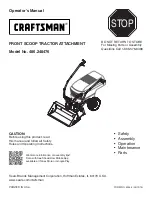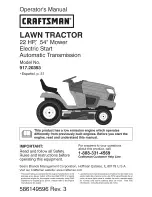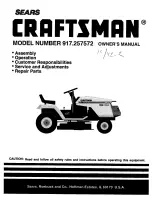
- 9 -
DRIVING THE TRACTOR
1. R e d u c e s p e e d b e f o r e t u r n i n g o r a p p l y i n g t h e
brakes. Before driving on the road, be sure to in-
terlock the two brake pedals. Applying only one
rear brake at road speeds could cause the tractor
to roll over.
2. Observe all local and state traffic regulations. Use
SMV
emblem and warning flashers as required.
3. When driving the tractor on a road, turn the light
switch to the bright headlamp position. Be sure
the SMV emblem is visible and clear. Dim the trac-
tor lights when meeting a vehicle at night. Make
sure the lights are adjusted to prevent blinding
the driver of an oncoming vehicle. Hold road speed
to controllable rate.
4. Never apply the differential lock while turning.
When engaged, the differential lock will prevent
the tractor from turning.
5. Power steering makes the steering wheel easy to
turn. Drive the tractor with special care when trav-
eling at road speeds or when on the highway.
6. Do not drive the tractor on the road with the imple-
ment in operation.
7. To avoid premature wear, do not use the clutch
pedal as a foot rest.
8. To avoid tip over, drive the tractor with care and at
speeds compatible with safety, especially when
operating over rough and wet ground, when cross-
ing ditches or slopes and when turning corners.
Do not drive the tractor close to the edges or
ditches of banks that may break under the weight
of the tractor.
9. Use caution while operating the tractor under ab-
normal conditions.
10. Tractors with narrow tread width require extra driv-
ing caution to avoid tip over. You can improve sta-
bility by adjusting rear wheels to maximum tread
width, see page 38.
623O003A










































